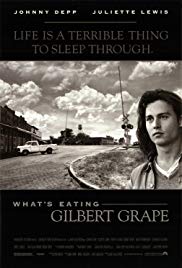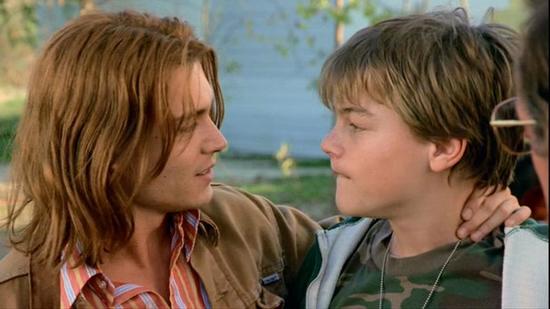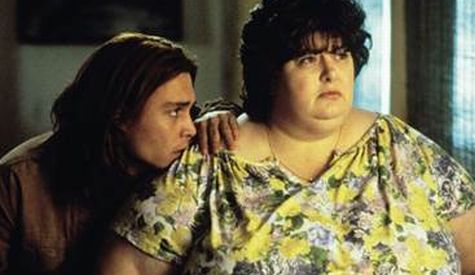More on Theme and Meaning
Note that Question 1 – 4 in the Learning Guide also relate to theme and meaning.
5. Describe one of the themes of this movie. What message are the filmmakers trying to send to the audience?
Suggested Response:
There are several themes in the film and several ways expressing each theme. These include: (1) the need for parents to take care of their children and fulfill their responsibilities and not to require that the children take care of the parents (at least until the parents are very old); (2) young people need to find a way fully develop their own lives and still meet their responsibilities; where these conflict, compromises must be found; (3) change is coming, change may not be entirely for the better, and that it is best to make adjustments.
6. What role does chance play in the story and how does that affect its theme?
Suggested Response:
Chance plays a large role, as it does in life. Gilbert’s mother could have lived years longer. Becky’s grandmother’s camper could have given out in the town before Endora, etc. If these situations had occurred, the story would have had a much different ending. Many of the themes would not have been affected by these events. Gilbert still had to figure out how to deal with these responsibilities to Arnie.
7. What would have happened had Gilbert’s mother not fortuitously died?
Suggested Response:
Any answer is speculation. Strong answers will be based on projecting the trends seen in the story. They include: Gilbert will get fed up and simply leave his sisters to take care of their mother and Arnie; Gilbert stays and becomes an embittered man.
8. Should Gilbert have just chucked his whole family and left to live his own life long before this story started?
Suggested Response:
Answers will differ. That is the solution that Tom Wingfield took in The Glass Menagerie. Good responses will deal with the conflict between responsibility (duty) and the right to live one’s own life, between the responsibility to self and the responsibility to others.
9. The movie opens with a scene showing an empty vista. What does this express?
Suggested Response:
The isolation and loneliness of the small town.
10. Loneliness is one of the problems exemplified in the film. In which characters do you see it most clearly and what may be the problems loneliness creates?
Suggested Response:
Answers will vary and should be well supported. The married woman with whom Gilbert is having an affair seems lonely despite the fact that she is married and has a family. She, like Gilbert, wants more out of life and loneliness pushes her to be unfaithful in her marriage. Gilbert is lonely in that he does not have a life of his own; he is bound to Arnie which creates a sense of guilt and a feeling of being trapped. Gilbert’s mother feels the loneliness created by her husband’s suicide. Her feelings lead to obesity and the inability to function.
11. Sometimes in literature, a writer uses the character of a child to enunciate theme. The character of Arnie has the maturity of a young child and makes two statements which strongly relate to theme. What are they and how do they relate to theme?
Suggested Response:
The two statements are that Gilbert is shrinking and the second is that “we aren’t going any where”. They relate to theme in that as a teenager becomes an adult, life is full of possibilities and their ability to deal with the world is expanding. Yet Gilbert, burdened by his responsibilities to his mother and to Arnie, sees the possibilities of his life closing down, limited to Endora and the deteriorating house. In that sense Gilbert is shrinking. (This statement has another meaning, of course, and that is that as Arnie grows larger, relatively speaking, Gilbert grows smaller.) The second statement, “we aren’t going anywhere”, sets out Gilbert’s predicament.
12. In this story, who is the protagonist and who is the antagonist?
Suggested Response:
The protagonist is obviously Gilbert who is trapped by responsibilities that have been thrust upon him and who is at risk of losing his youth. Determining an antagonist is a little more difficult. There are a number of possibilities. Gilbert’s mother is one. She is the person who trapped Gilbert by refusing to take responsibility for Arnie and by demanding that Gilbert, along with his older sister, take care of her. Another possible antagonist is that part of Gilbert’s personality which accepted the responsibilities thrust upon him by his mother. After all, Gilbert could have just left, as did Tom in The Glass Menagerie or he could have set limits and refused to accept his mother’s abdication of her parental responsibilities.
13. Do you find the ending of this story entirely satisfying? After all, Gilbert still has responsibility for Arnie, something that will circumscribe Gilbert’s possibilities all of his life.
Suggested Response:
There is no one correct answer. It is true that Gilbert would be freer to pursue his own life without having to care for Arnie. However, life is not always ideal and part of Gilbert is his love for Arnie and his acceptance of the responsibility for taking care of Arnie. And, in fact, the difficulties that these two young men will have to face are immense and their futures, at least in the short-run for Gilbert, are bleak. In their new environment, who is going to take care of Arnie while Gilbert works? Is Becky going to be willing to hitch her life to Gilbert, which includes responsibility for Arnie? What would happen to Arnie if Gilbert put him in a mental hospital or some other institution?
The following three questions should be asked together.
14. The adult characters who live in Endora and figure in Gilbert’s life are his mother, the owner of the grocery store where Gilbert works, Mrs. Carver and her husband. They all have something in common. What is it?
Suggested Response:
They are all dysfunctional and they all demand something from Gilbert.
15. Gilbert has two friends in town who are roughly his age. What do they have in common with the adults in the town?
Suggested Response:
They are losers as well.
16. What are the filmmakers trying to tell us by presenting these characters as the people who are important to Gilbert’s universe?
Suggested Response:
Endora is not an interesting place; it’s a place that Gilbert needs to get out of.
17. Given the fact that Gilbert will take Arnie with him wherever he goes, do you see any future in Gilbert’s relationship with Becky or with any other woman?
Suggested Response:
It will be difficult for Gilbert to have a relationship with any woman because Arnie take up a lot of Gilbert’s time and attention.
Expository Phase
18. This story has an expository phase. When does it end and what function does it play in the story?
Suggested Response:
The expository phase ends when Gilbert’s truck drives up to the market where he works. In the expository phase in What’s Eating Gilbert Grape the audience has been introduced to the characters in Gilbert’s family, his restricted life (the conflict), the fact that he lives in a small town undergoing pressure for change from, for example, a new large supermarket and last but not least, Becky’s grandmother’s camper has broken down and she and her grandmother have stopped in Endora bringing into the story an important force that will help Gilbert break out of the constraints that bind him to the town.
Symbol
19. What does the name of the town tell the viewer about the place in which Gilbert lives?
Suggested Response:
That it’s a dead end; a place from which Gilbert must escape if he is going to live a satisfying life.
20. Describe a symbol that is used in the story.
Suggested Response:
Here are several. There are indubitably more.
The house = Gilbert’s family in its dysfunctional state;
Arnie jumping on Gilbert’s back and being almost too heavy for Gilbert to take = Gilberts’ obligations are about to crush him;
the water tower = the heights Arnie will never achieve and the danger he is in all the time;
Miscellaneous
21. Gilbert says to Arnie, “Match in the gas tank: Boom, Boom!” and Arnie comes down from the water tank. How do a match and a gas tank figure in the end of the story?
Suggested Response:
Answers will vary. Students should note that Gilbert got Arnie to come down from the water tank by reciting this line and that it was a match and gasoline that burned down the family home at the end of the film. In each case, the problem was ended.
See Discussion Questions for Use With any Film that is a Work of Fiction.




